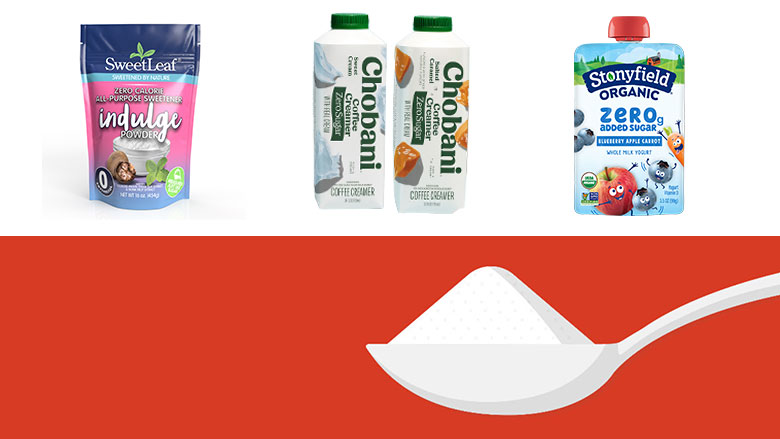[ad_1] 
Due to increased awareness of the health risks associated with high sugar consumption, the food and beverage industry is under pressure to reduce sugar content without compromising taste or texture. In response, there has been a focus on innovation in sugar reduction, leading to the emergence of various new and existing ingredients that allow manufacturers to meet consumer demand for healthier products while maintaining a satisfying eating experience.
Here are some of the key ingredients making waves in sugar reduction:
Allulose: The “It” Ingredient
Allulose has gained popularity for its ability to mimic the taste and texture of sugar with fewer calories. Derived from fruits like figs and raisins, allulose is 70% as sweet as sucrose but only has 0.4 calories per gram, making it a great option for reducing sugar content without compromising on flavor or mouthfeel.
Allulose also does not spike blood sugar levels, making it suitable for diabetic-friendly and keto-friendly products. Many products across different categories, including dairy, beverages, and confectionery, now use allulose. For example, Quest Nutrition offers protein bars sweetened with allulose, helping consumers manage their sugar intake while enjoying a delicious snack.
Stevia and Monk Fruit: Natural Sweeteners with a Clean Label Appeal
Natural sweeteners like stevia and monk fruit continue to be popular choices for sugar reduction, especially in the clean label category. Stevia, extracted from stevia leaves, has been a go-to ingredient for its plant-based origin and zero-calorie profile. Recent advancements in stevia technology, such as the development of next-generation steviol glycosides like Reb M and Reb D, have enhanced its taste profile, reducing bitterness and aftertaste.
Monk fruit, another plant-based sweetener, is gaining recognition for its intense sweetness and is often used in combination with other sweeteners to enhance flavors. Brands like Chobani’s Shelf-Stable Super Milk offer products with reduced sugar content appealing to health-conscious consumers.
Erythritol: The Sugar Alcohol Solution
Erythritol, a sugar alcohol, remains a popular sugar replacement due to its low caloric content and ability to mimic sugar’s texture. With zero glycemic impact, erythritol is often used alongside other sweeteners to balance taste, texture, and cost. Its clean taste and lack of digestive issues make it a preferred choice over other sugar alcohols like sorbitol.
In the confectionery sector, erythritol is used in reduced-sugar chocolate and candies. Brands like Lily’s Sweets use erythritol in their no-sugar-added chocolates, providing consumers with a satisfying treat without the sugar crash. Combining erythritol with high-intensity sweeteners like stevia and monk fruit maintains sweetness while reducing caloric intake.
Soluble Fibers and Prebiotics: Functional Ingredients for Sweetness
Functional ingredients like soluble fibers and prebiotics are increasingly used in sugar reduction formulations. Ingredients like inulin and chicory root fiber offer mild sweetness while supporting digestive health. These fibers also improve texture in products with reduced or no sugar.
Prebiotic fibers are valuable in categories where sugar affects mouthfeel and stability, such as baked goods and dairy products. Brands like Keto Pint use chicory root fiber in their low-carb ice cream to maintain creaminess while reducing sugar content.
Watch a short video showcasing new sugar reduction products
Tagatose: A Rising Star
Tagatose is a low-calorie sugar alternative gaining attention for its sweetness and functional properties. With 92% of the sweetness of sucrose, tagatose is ideal for baking and cooking applications. Classified as a sugar, tagatose has a low glycemic index and fewer calories than traditional sugar, making it suitable for diabetic and weight-conscious consumers.
Tagatose’s ability to caramelize and provide browning in baked goods is attractive for creating reduced-sugar versions of indulgent products like cookies and cakes. While its use is still niche, expect to see more food companies exploring tagatose as a versatile sugar reduction tool.
Blended Sweetener Systems: The Future of Sugar Reduction
Blended sweetener systems, combining multiple ingredients to create a sugar-like experience, are a growing trend in sugar reduction. These systems mix high-intensity sweeteners like stevia or monk fruit with bulking agents like allulose, erythritol, or soluble fibers to achieve balanced sweetness without aftertaste.
Brands like Swoon use a blend of monk fruit and allulose to create sugar-free beverages without artificial aftertaste. By combining these ingredients, Swoon achieves a similar sweetness and mouthfeel to traditional sugar-sweetened drinks.
Check out a webinar with industry experts discussing sugar reduction trends.
The Road Ahead for Sugar Reduction
As the demand for healthier, lower-sugar options continues to grow, the focus on sugar reduction will only increase. Ingredient suppliers are responding with innovative solutions, from new plant-based sweeteners to advanced blended systems, offering product developers a wide range of tools to meet evolving consumer needs.
Success in sugar reduction requires the right mix of ingredients that deliver sweetness while maintaining functional properties. With options like allulose, stevia, erythritol, and more, the possibilities are endless.
Source link

Emil Kovács graduated from the Journalism program at Eötvös Loránd University in Hungary. During his journalism studies, he focused on data journalism, investigative reporting, and multimedia storytelling. He gained experience by writing for the university’s student newspaper, where he gained attention for his articles on social issues. After graduation, Emil began working as a reporter at a European news agency, where he conducts in-depth analyses of international news and current events.


